Complete scrub tries his hand at SNK Fighting Legends: Art of Fighting
Hello, dear reader. Before we start looking at Art of Fighting, part of this SNK Fighting Legends compilation that our friends at Funstock were good enough to send me a copy of — and which is currently available for preorder, with a release date planned for later this year — I feel it’s important to provide a bit of context.
Your Editor has a confession to make: he is exceedingly bad at fighting games. He is so bad at fighting games that he tends not to bother even trying most modern fighting games, even those that he thinks might appeal to him from an aesthetic standpoint.
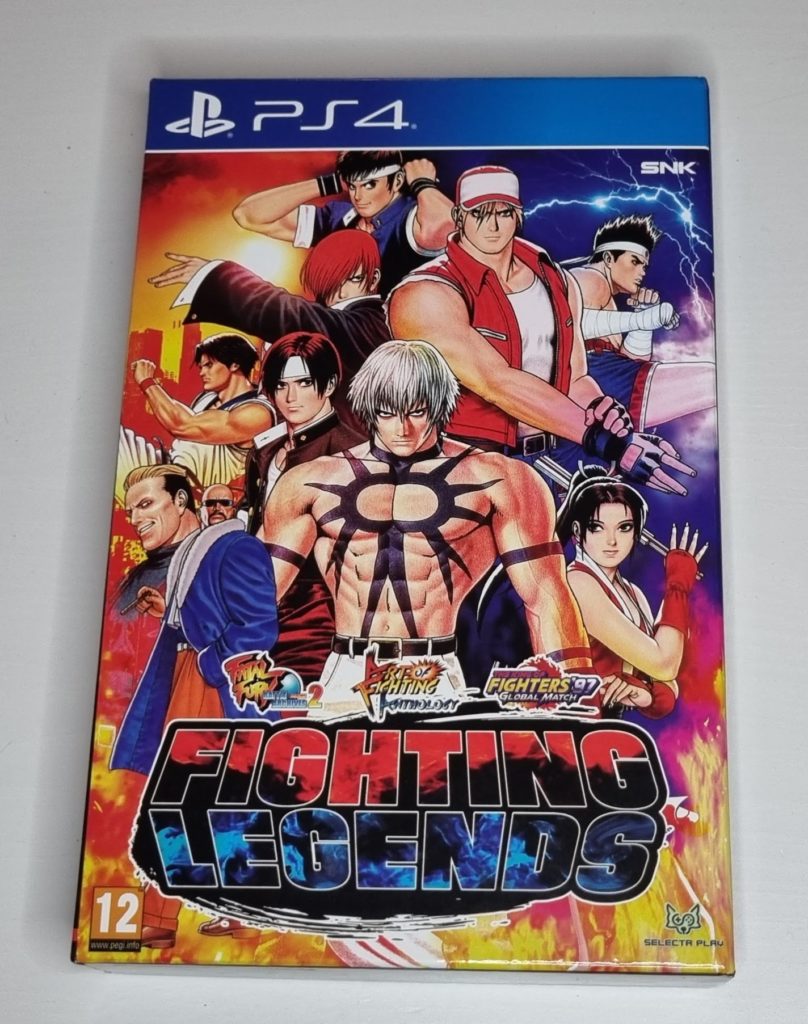
To put this in context, the last fighting game that your Editor put any serious time into was Dead or Alive 4 (plus a brief dalliance with SNK Heroines when that first came out) and the majority of his experience comes from Street Fighter II on the SNES. The original Street Fighter II. Played on an NTSC American cart on a PAL SNES in all its accidental widescreen glory.
With that in mind, your Editor, the complete scrub that he is, thought it would actually be very interesting to go back to some of these early fighting games and see how he got along with them. So that’s exactly what we’re going to do: we’re going to take a look at each of the seven games included in the SNK Fighting Legends bundle and see how accessible they are to the most inexperienced of fighting game players, and if there’s any value to giving them a go in order to brush up on your skills. Or indeed develop those skills in the first place.
So we begin with the first game in the Art of Fighting Anthology included in the SNK Fighting Legends bundle: Art of Fighting.
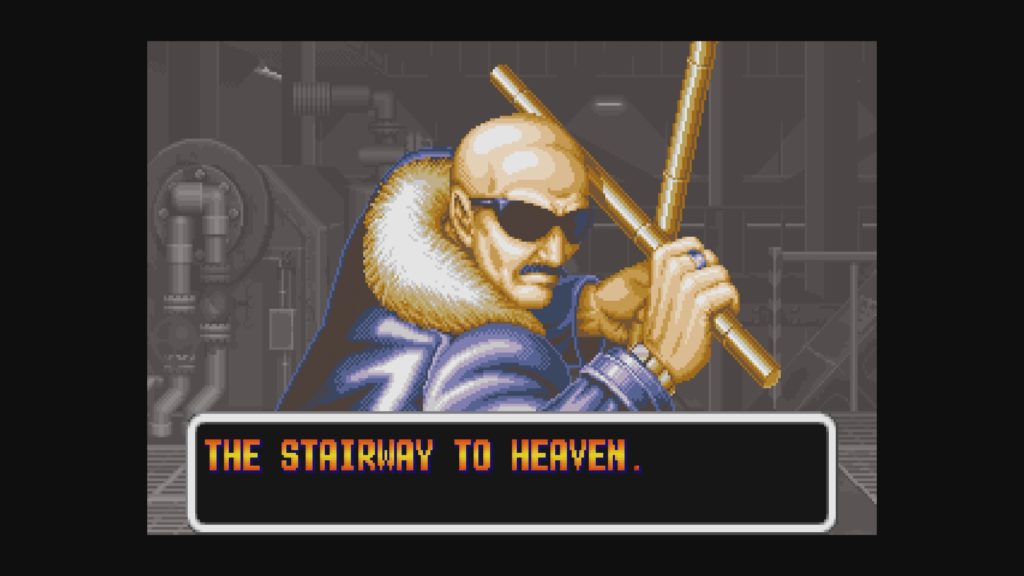
Art of Fighting
Art of Fighting, also known as Ryuuko no Ken, was first released for Neo Geo in 1992 which, for context, is a year after Street Fighter II’s original version hit the scene. It unfolds in the same universe as the Fatal Fury series, and is considered to be a prequel. The King of Fighters series also makes frequent reference to it, and its characters have their own team who compete in the tournaments.
Art of Fighting has ten playable characters, though unusually for the genre only two of them are playable in the single-player story mode. Eight of the ten are playable in the two-player versus mode, and the remaining two must be unlocked through cheat codes.
The first thing I noticed about Art of Fighting is that it — and I assume most fighting games — is nigh-unplayable with the DualShock 4 due to the squishiness of the D-pad and the imprecise nature of the analogue stick. So before getting stuck into things seriously I bit the bullet and ordered myself a Razer Raion fightpad for PS4, which has a lovely clicky D-pad and nice chunky buttons. If you’re going to do something, then you might as well do it right, I thought.
Anyway. I decided to allow myself nine continues (plus more if I found myself enjoying myself) to put the game through its paces and see how I got on with it. Could I learn something from a game this old? Is a game this old worth playing today when more modern games exist? Let’s take a look.
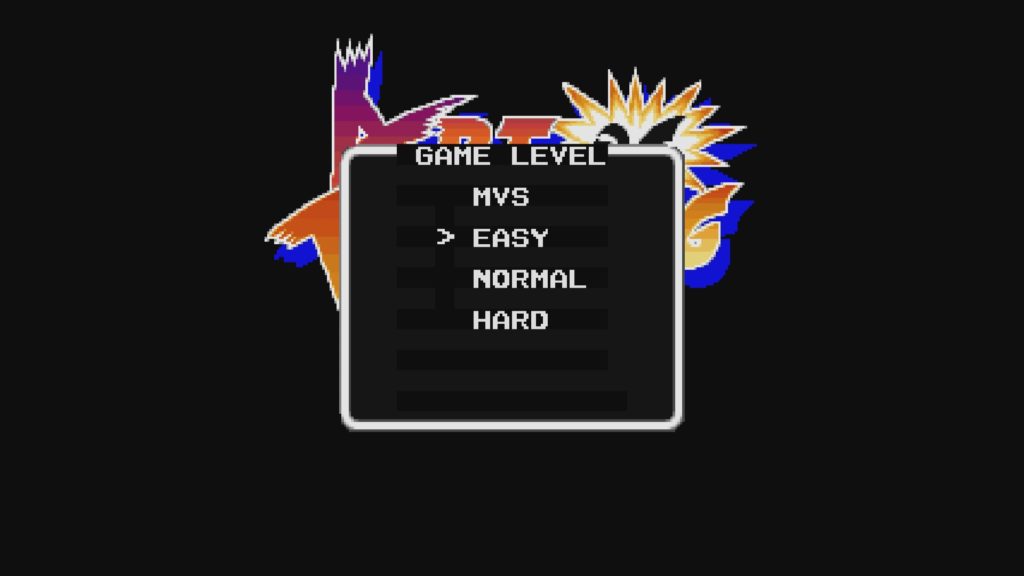
I’m playing Art of Fighting on Easy mode, because I am both a games journalist and, as previously noted above, inexperienced and generally terrible at fighting games. Plus in my experience, there is absolutely no shame in playing retro and arcade games on the easiest difficulty level; often they present more than enough challenge for newcomers on that level, while experienced pros can bump up the challenge factor as they see fit. The “MVS” difficulty setting here matches the arcade version of the game.
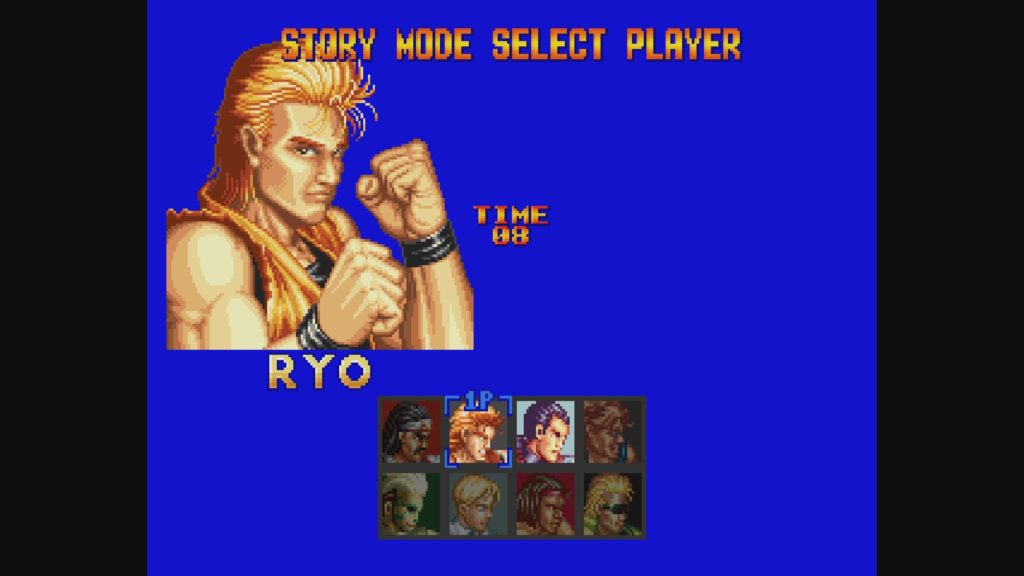
Here we have a distinctly Street Fighter II-esque character select screen, though you’ll notice that only Ryo and Robert are playable in the Story Mode. This would essentially be the equivalent of only being able to play Ryu and Ken in Street Fighter II — they’re probably the most accessible characters and thus suitable for newcomers trying the single-player mode for the first time, but it would have been nice to have the opportunity to play as the other characters solo.
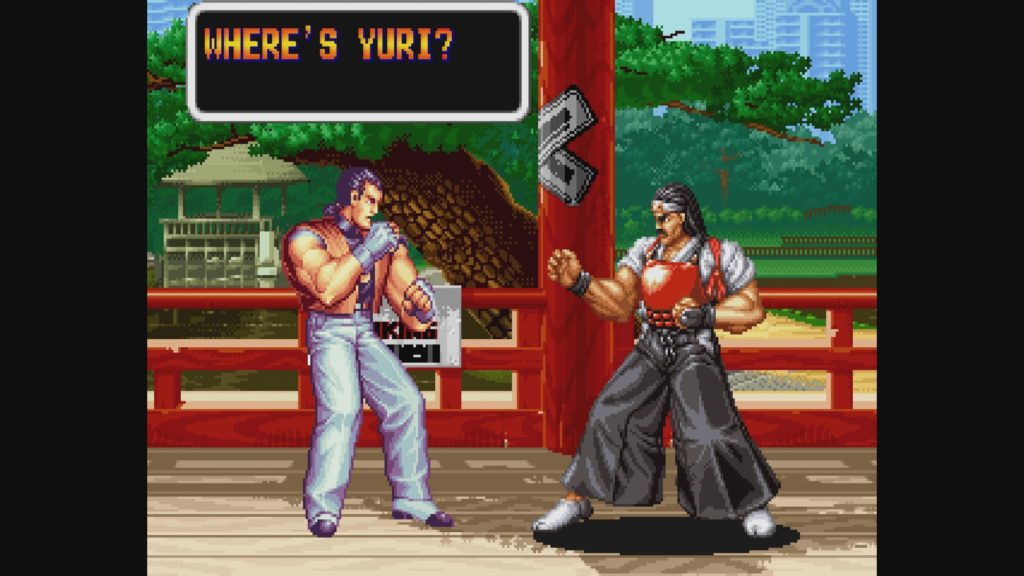
Each fight is prefaced with a very brief and usually fairly nonsensical story scene that showcases the enormous, beautiful sprites used in the game. Here, Robert is making enquiries as to the whereabouts of Yuri, Ryo’s sister and the main objective of the game. Todo says he’ll talk if you beat the crap out of him first. Well, he doesn’t exactly say that but it’s essentially what he means.
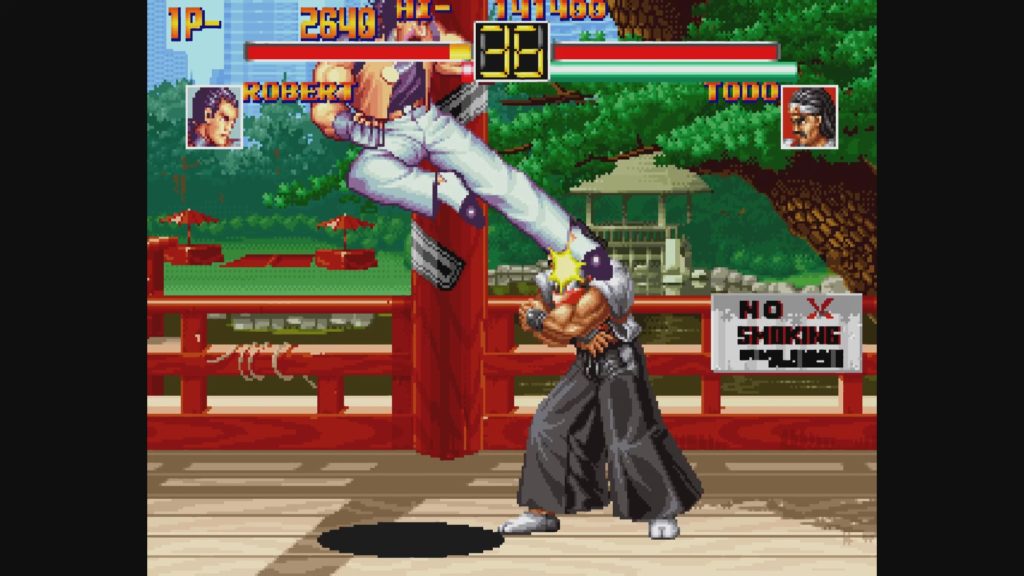
As a first opponent in the game’s single-player mode, Todo is deceptively straightforward to beat. He’s not very aggressive and he’s very easy to land a hit on. Even my wild flailing manages to knock him out once without too much difficulty.
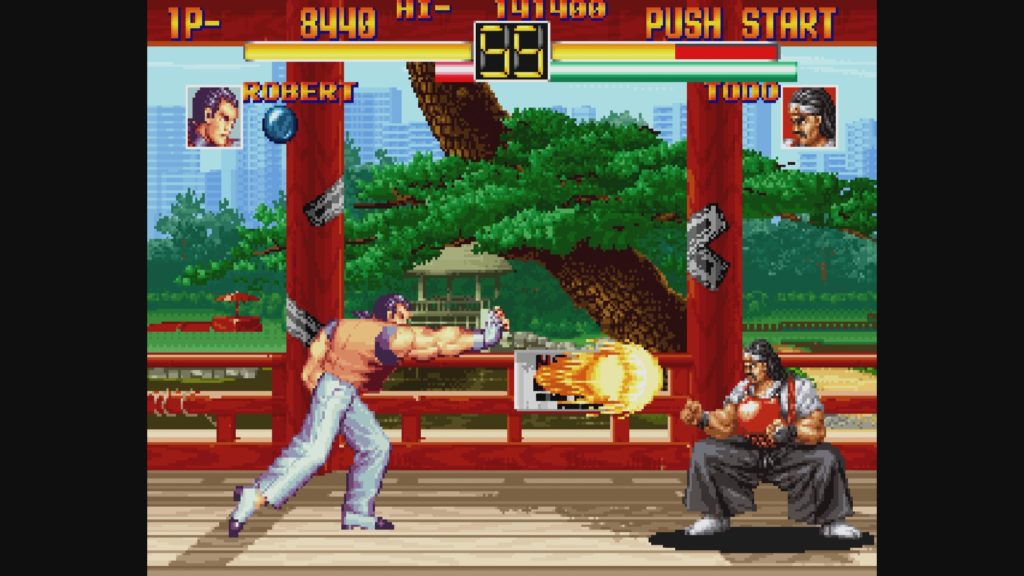
Spurred on by the confidence that my first round victory gave me, I decided to get a little more adventurous and try using some special moves. While these were almost impossible to perform with the DualShock 4, the clicky 8-way D-pad of the Razer fightpad made the quarter circle forward fireball motion a breeze to pull off relatively consistently. With a bit of practice, I feel I could pull that off on command every time instead of maybe 75% of the time.
Art of Fighting’s special moves have a few considerations. Firstly, using them consumes the Spirit bar, meaning you can’t just spam them. And secondly, there’s no move list that you can refer to in the game; instead, you need to discover them for yourself — or, at various intervals, the game provides on-screen tips that tells you the motions you need to make to pull off various moves.
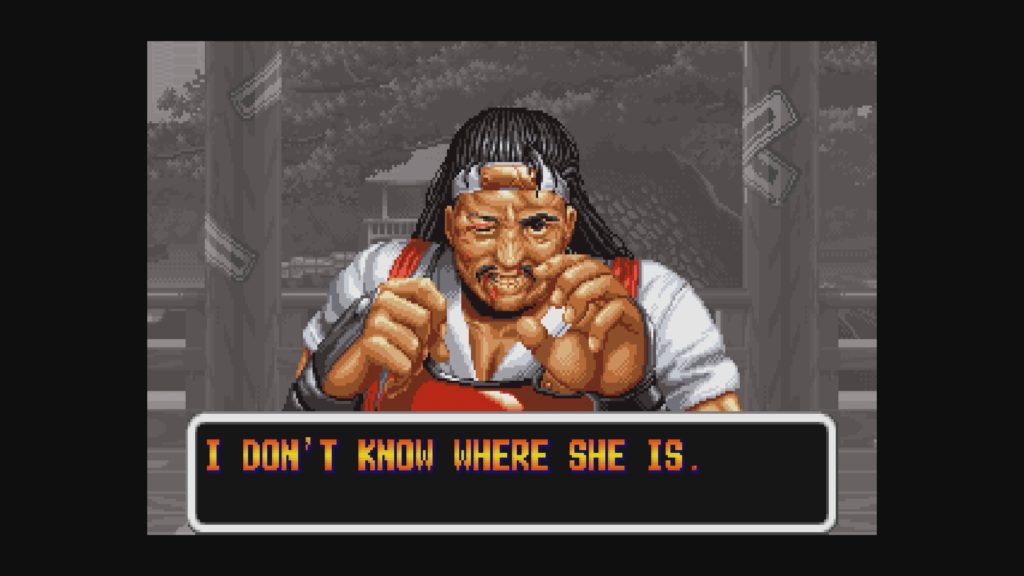
Rather amusingly, the knowledge that Todo drops on us after our victory is that he knows absolutely nothing. What a colossal waste of time that was. So it’s onwards to the next fight!
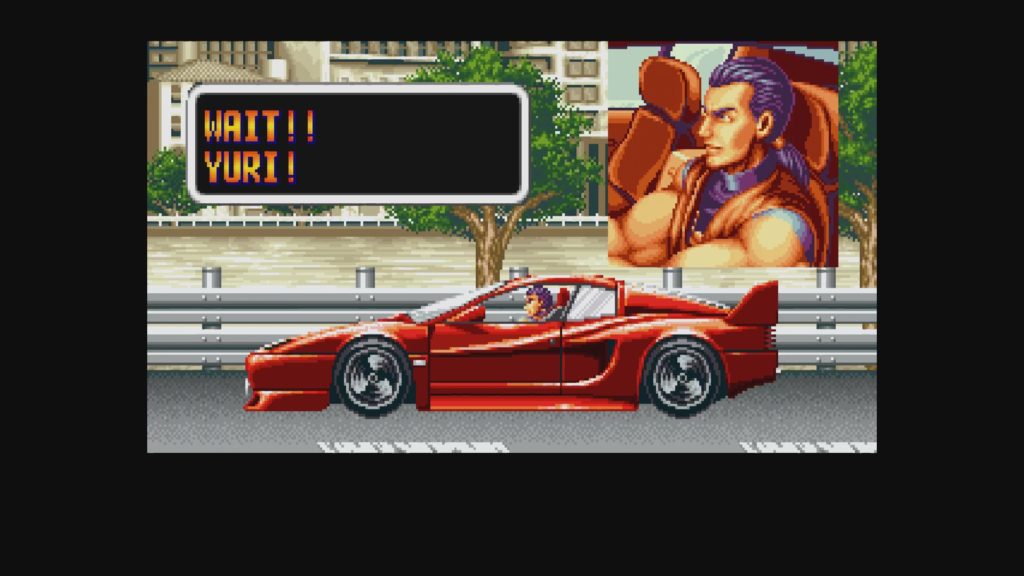
But not before a cutscene. These look a bit laughable now, particularly with the extremely stilted delivery of the limited English voice acting, but back in 1992 the prospect of a fighting game with an actual sense of narrative progression was new and exciting — the only “story” in Street Fighter II was the end sequences, after all.
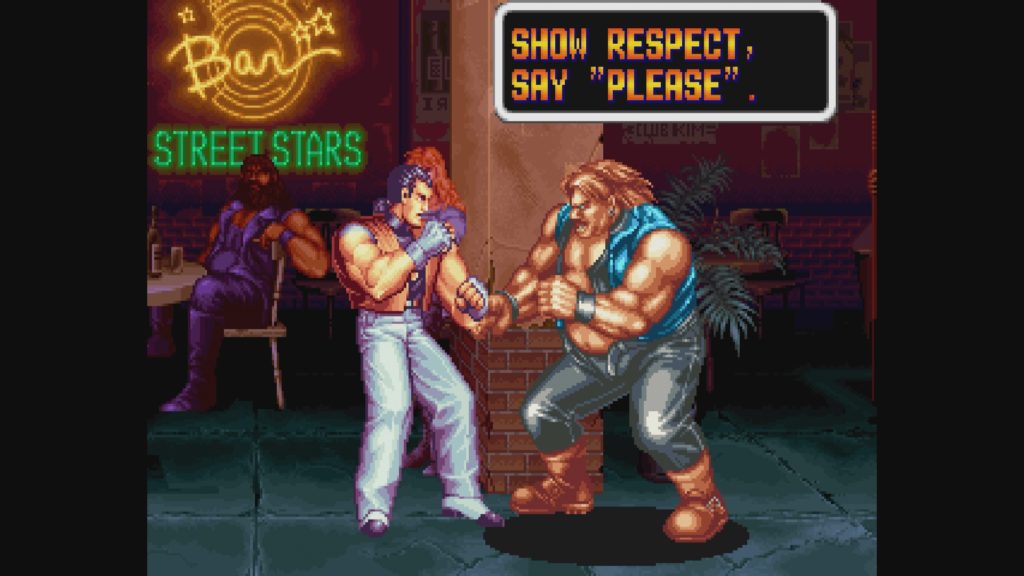
Here comes our next opponent, Jack. He’s a big fella, but surely as the second opponent in the game he can’t be too difficult to beat, right?
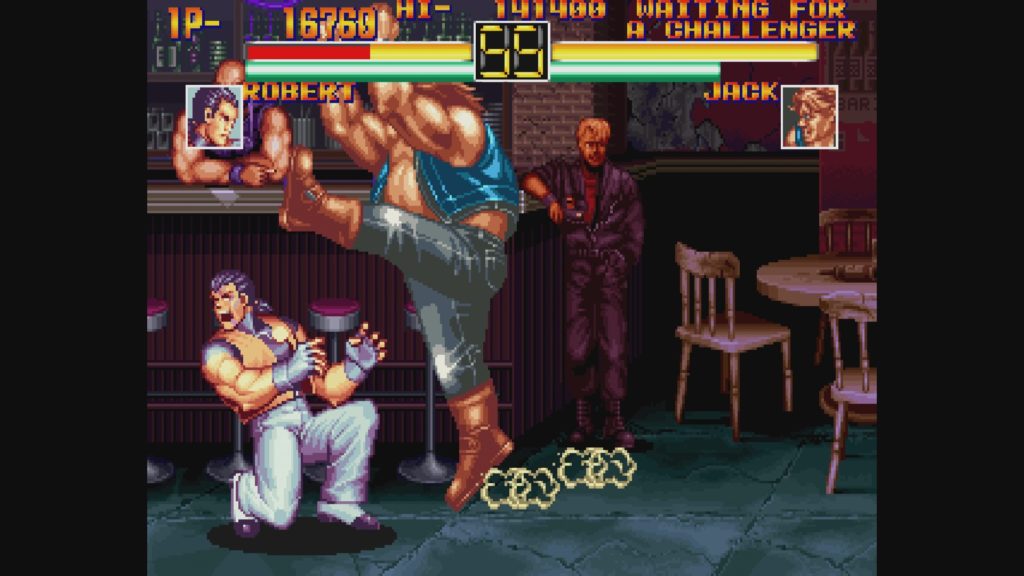
Hahaha. Oh, how little you know. Jack is an absolute pain in the arse to beat, because although his formidable size makes him a large target, he also has lots of powerful strikes that are able to punish anyone silly enough to get vaguely close to him.
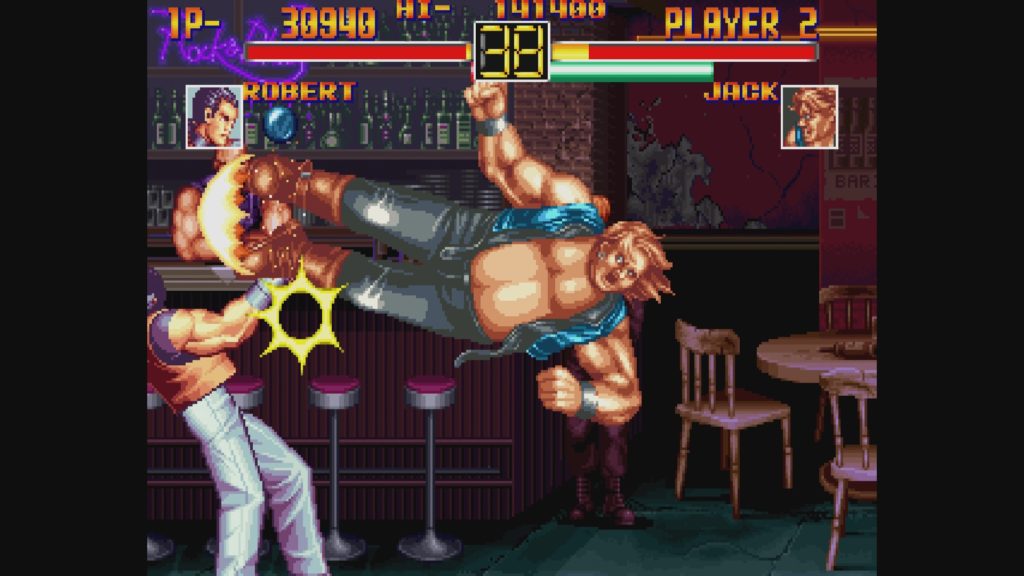
Although I manage to whittle his health down a fair bit — and even take him down in a round or two — he defeats me several times before I figure out how I might be able to progress past this early roadblock.
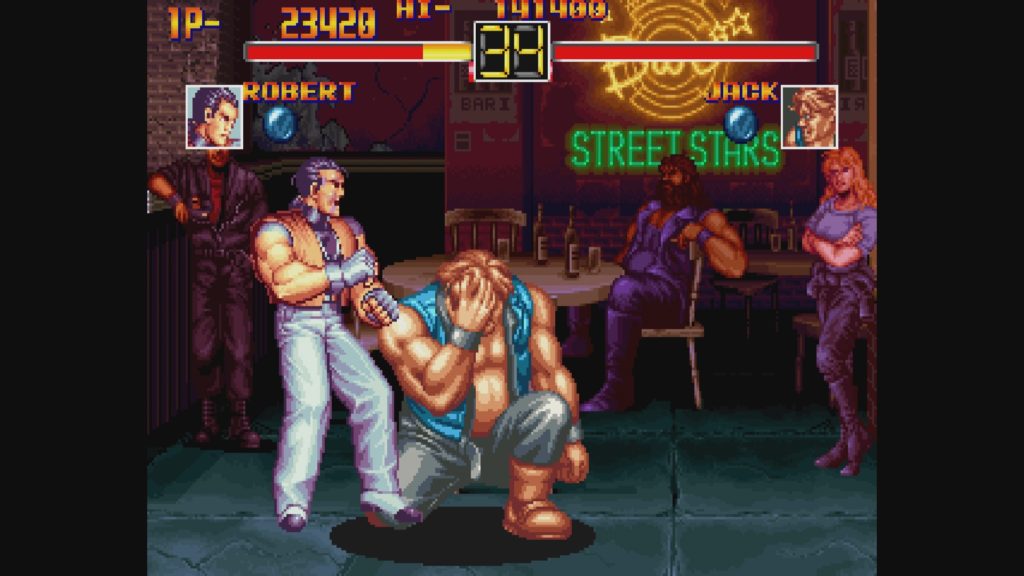
Turns out Jack acts as a painful lesson in how you should be playing Art of Fighting — you need to pay attention to your opponent’s Spirit bar as much as their health bar. Because all of Jack’s most powerful moves are powered by Spirit, if you can cause him to waste that, he becomes a bit of an easier target. And, conveniently, Art of Fighting’s “taunt” move is designed for nothing more than draining your opponent’s Spirit. With some canny, well-timed use of taunts, I finally manage to beat down Jack in a satisfactory manner.
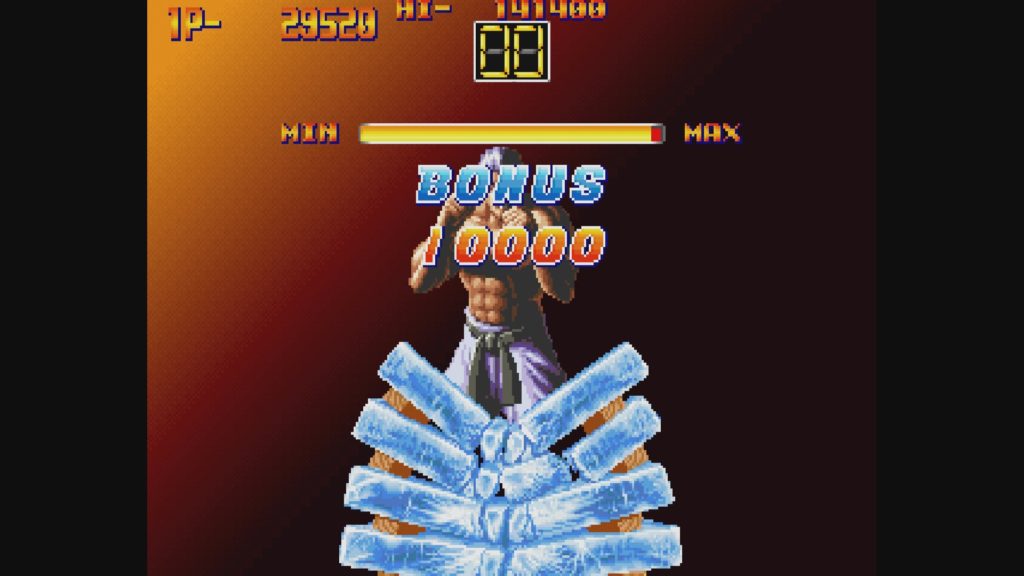
After fighting Jack, we’re presented with a choice of three bonus stages we can take on. Interestingly, these provide some extremely light RPG-style progression to the game’s story mode, since they allow you to “upgrade” your characters. The block-smashing minigame here, which requires hammering the punch button repeatedly to build up power, increases your character’s strength if completed successfully.
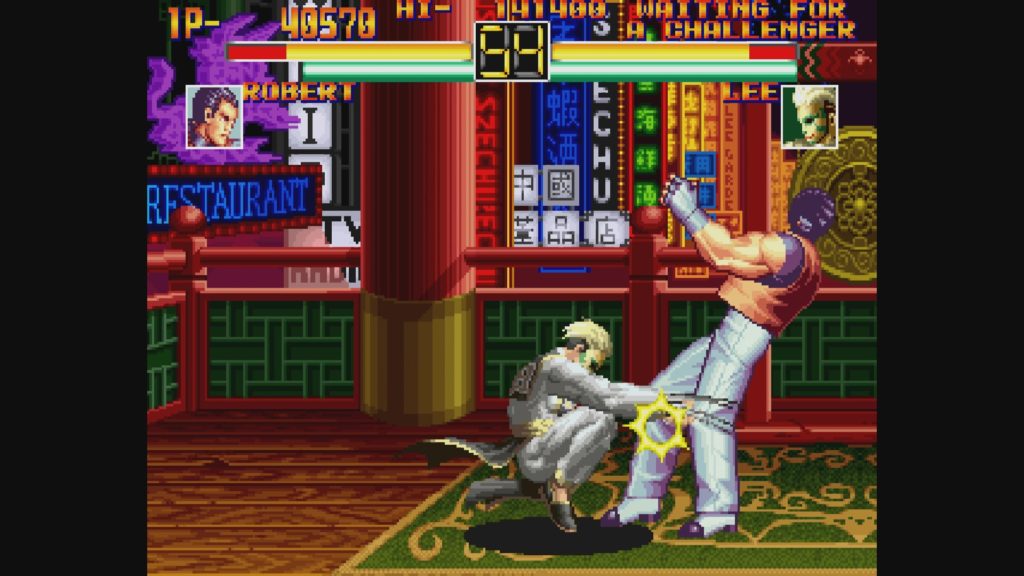
Our next opponent is the masked fighter Lee, who puts up a bit of a fight, but, despite his speed, isn’t nearly as much of a challenge as Jack. Here, both Ryo and Robert’s superior reach make fighting Lee a relative breeze in comparison — though I hasten to add that I still had to spend a credit on getting a feel for Lee’s high-speed fighting style.
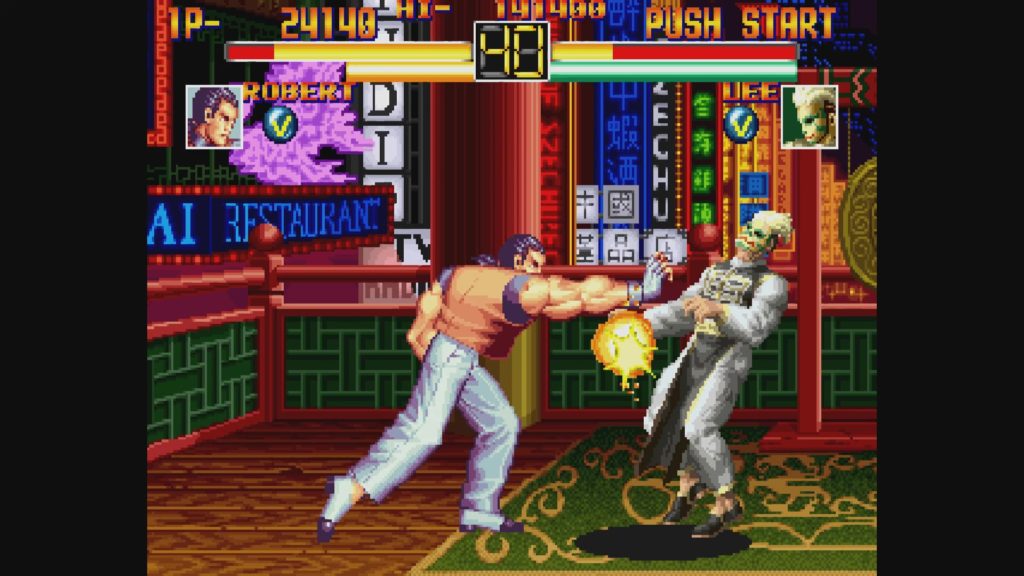
Special moves came in particularly handy in this fight. Because you’re limited in how much you can use them according to your Spirit bar, when they hit they hit hard. And as such, it’s important to make good use of them as much as you can amid any other frantic flailing around you might be doing. The ranged fireballs that both Ryo and Robert are capable of using are especially useful when attempting to keep Lee at bay. Look at me, I’m learning things.
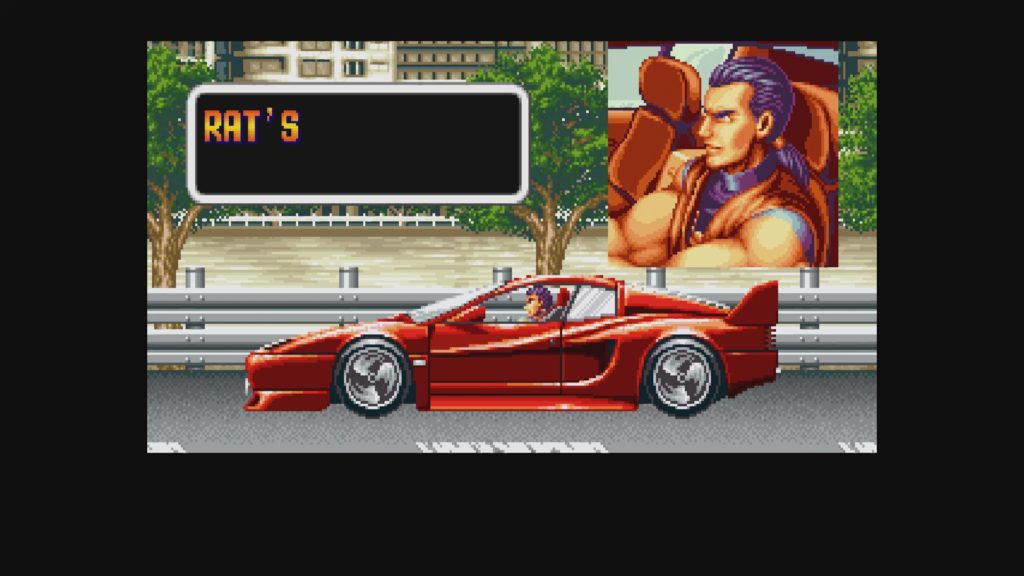
One of the best lines in the game.
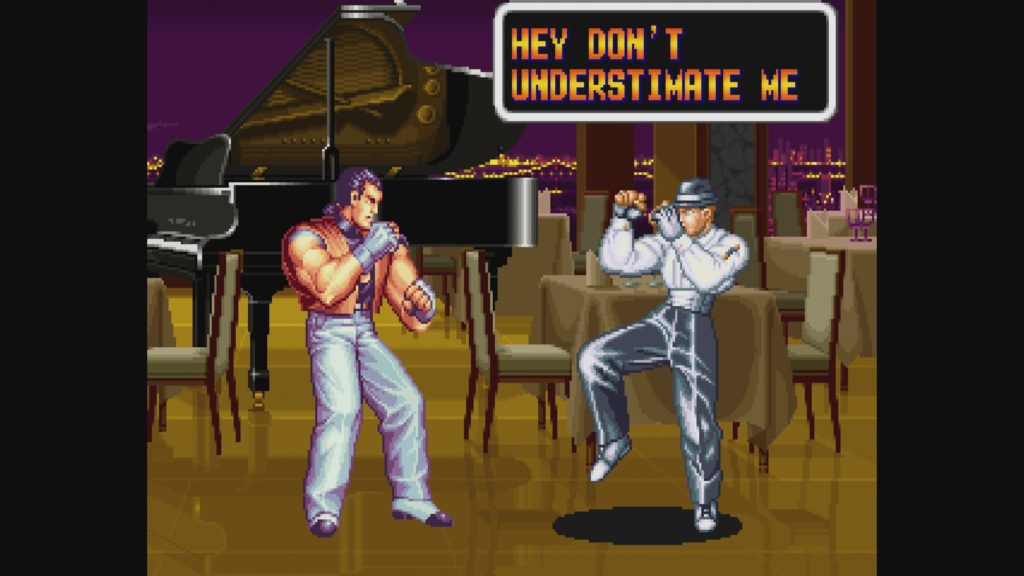
Next up, we’re faced with King, who is the exact opposite of Bridget from Guilty Gear. Instead of being a young boy masquerading as a cute girl, she’s a mature woman masquerading as a dude. Indeed, the original promotional material for Art of Fighting even referred to King as a “he” — but it’s pretty obvious almost immediately once you encounter her that King is all woman, and as the series progressed her designs evolved to embrace her femininity a little more while still keeping a masculine edge to her outfits.
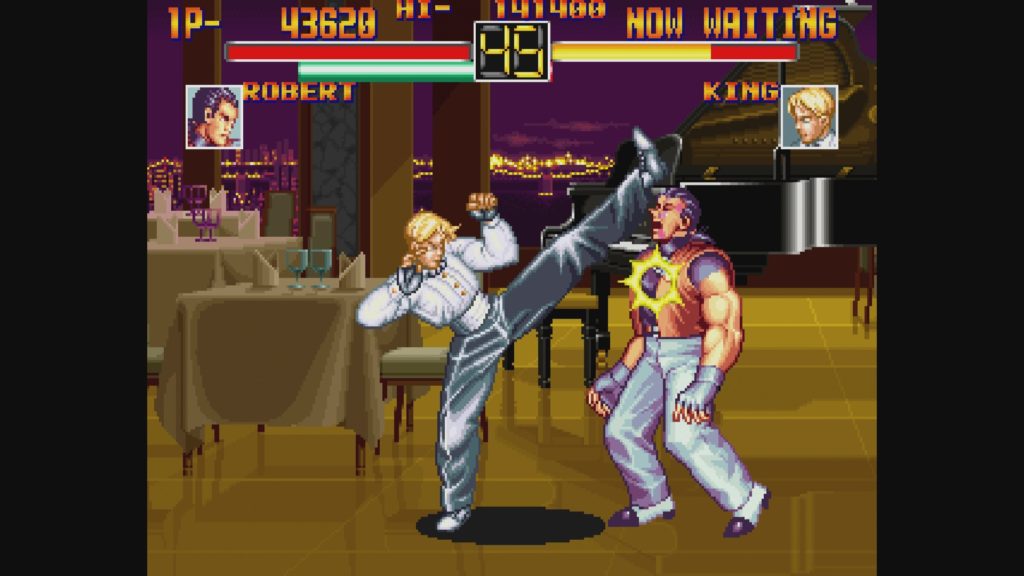
King proceeds to kick me about the face and neck with her long legs and Muay Thai-inspired moves, confirming that I should indeed have not underestimated her.
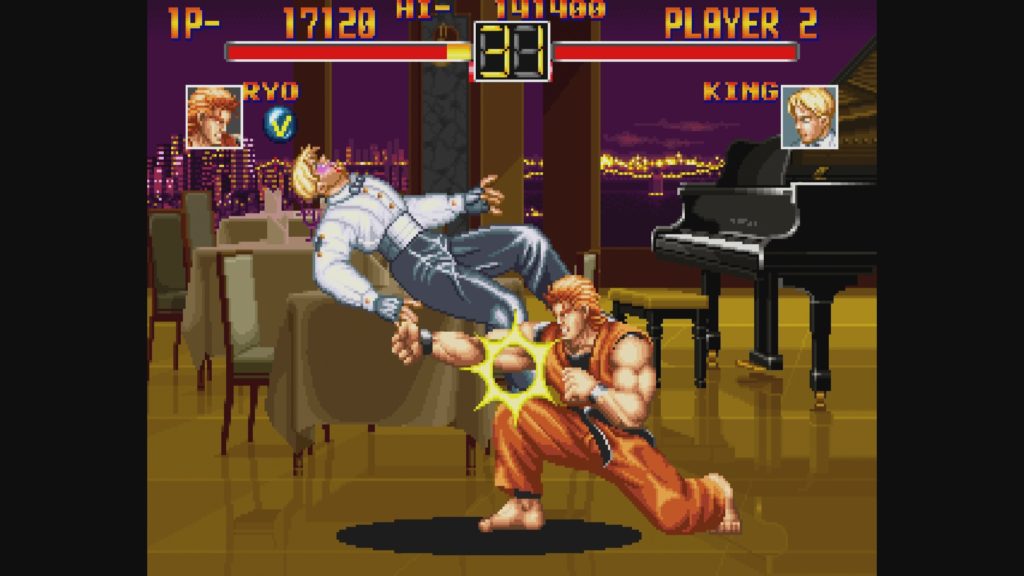
Several beatings later, I decide to switch to Ryo to see if I have any more success against King. Turns out I do; I’m not entirely sure I could tell you why, since both Ryo and Robert’s moves are quite similar to one another, but it definitely felt easier to beat King with Ryo.
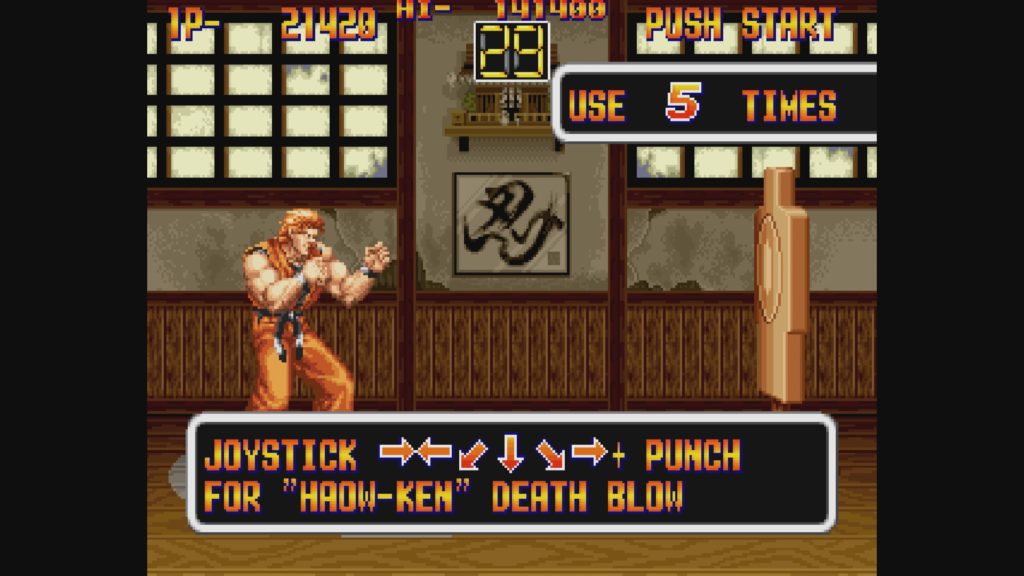
After overcoming King, it was time for another bonus round; this time I tried an interesting one that actually unlocks a powerful special move if you can pull off the required movement successfully five times in 30 seconds. This is a nice touch; it provides “in-character” training as well as the opportunity to practice a tricky special move in a safe environment. By this point I’m enjoying the way that Art of Fighting teaches you things as you play without necessarily being overly “tutorial-y” about it.
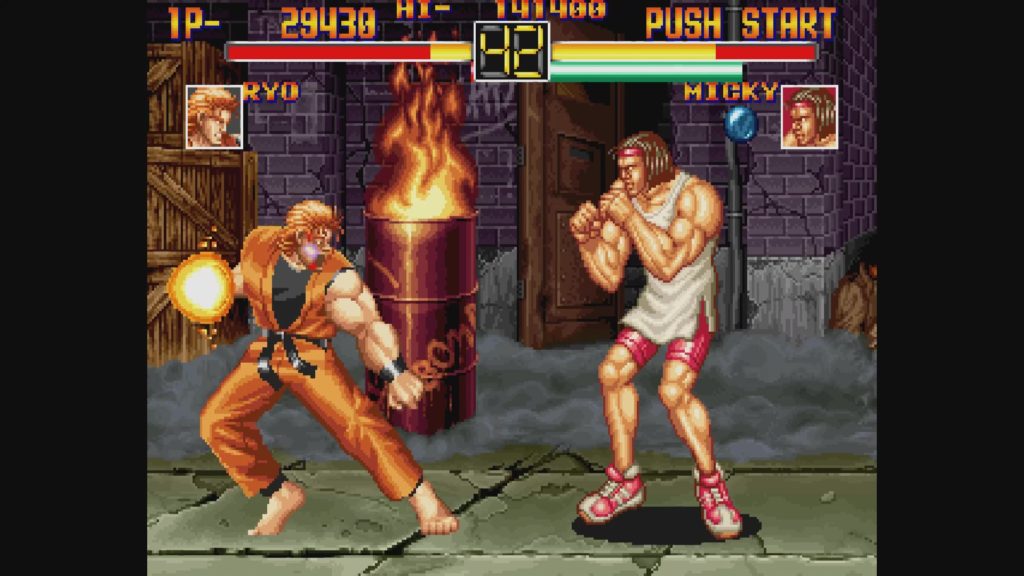
Next opponent is Micky, and a prime opportunity to demonstrate one of Art of Fighting’s neatest visual features — the fact that the character sprites get visibly beaten up as the fight progresses. Look at poor old Ryo’s fizzog there; the face only a mother would love.
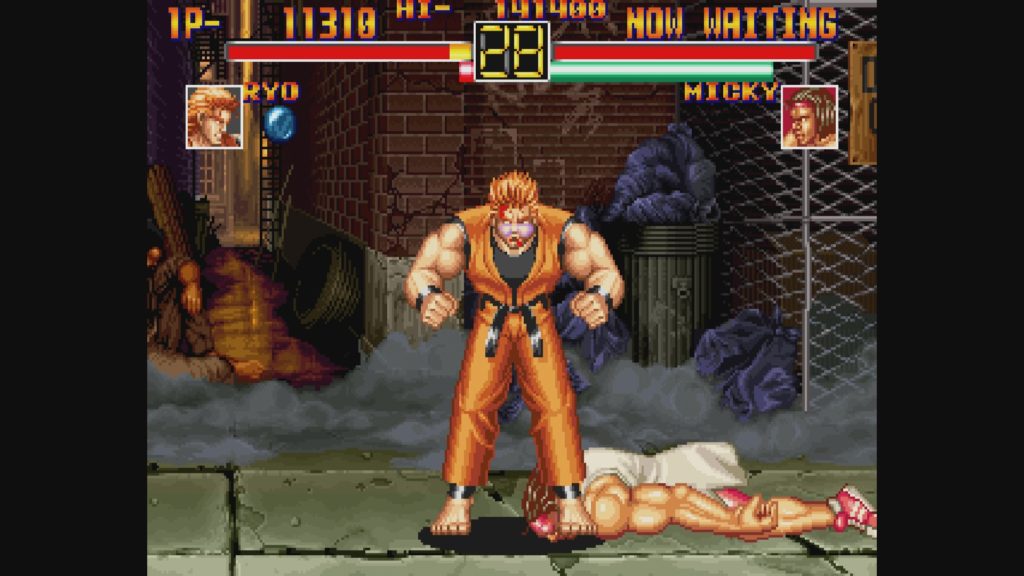
Micky puts up a reasonable challenge, but either I’m getting noticeably better at the game by this point, or he’s not quite as tough as some of the previous opponents. Jack still feels like the hardest opponent in the game, despite being the second stage of the story mode.
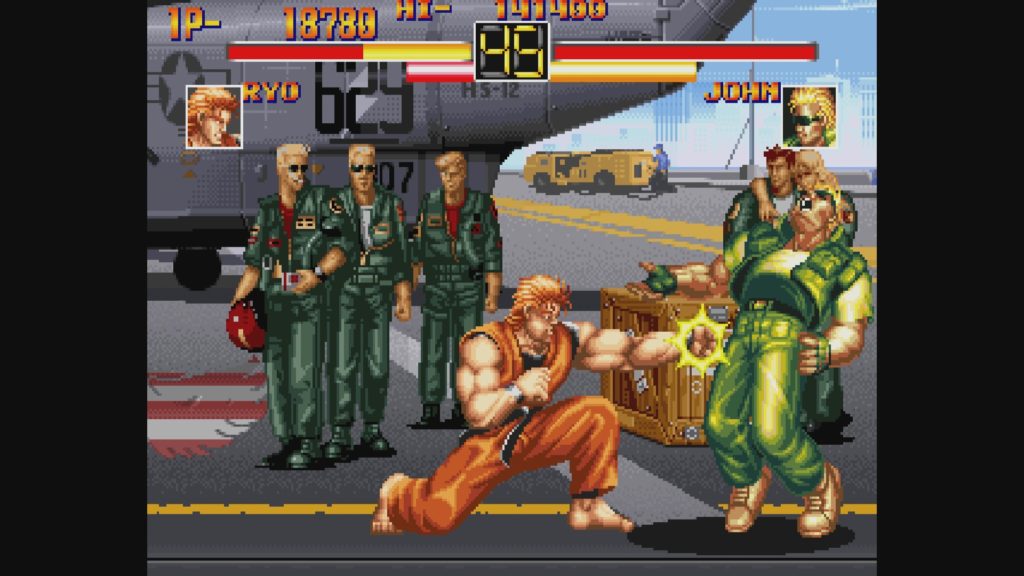
Next up we have definitely-not-Guile, who is swiftly dispatched with a solid punch right in the knackers. This was probably the second easiest fight in the game after Todo.
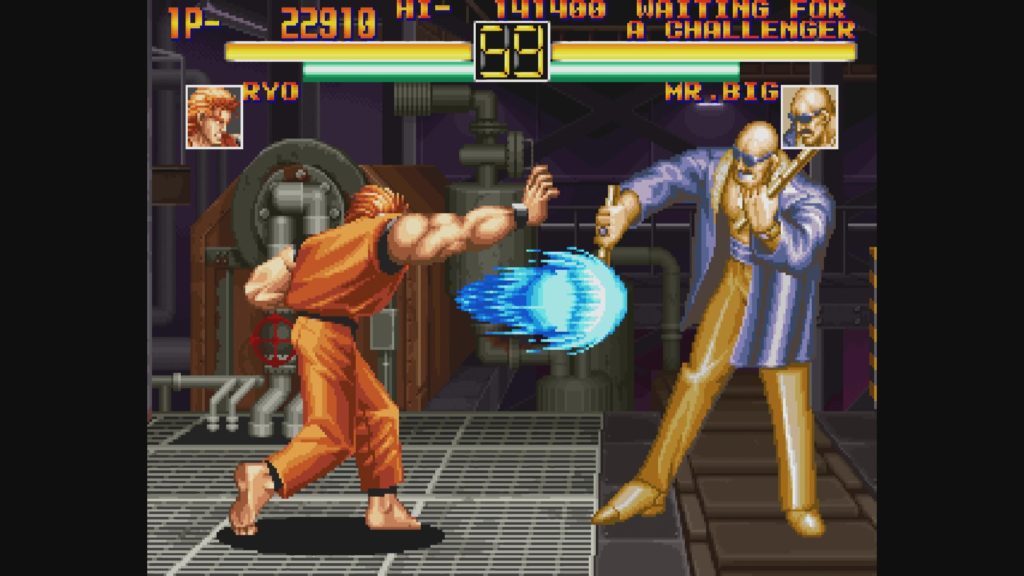
After that, it’s on to Mr. Big, the first of two bosses in the game. I’ll level with you, reader; I couldn’t beat him. I spent at least nine credits just on him, and absolutely could not penetrate his defences consistently.
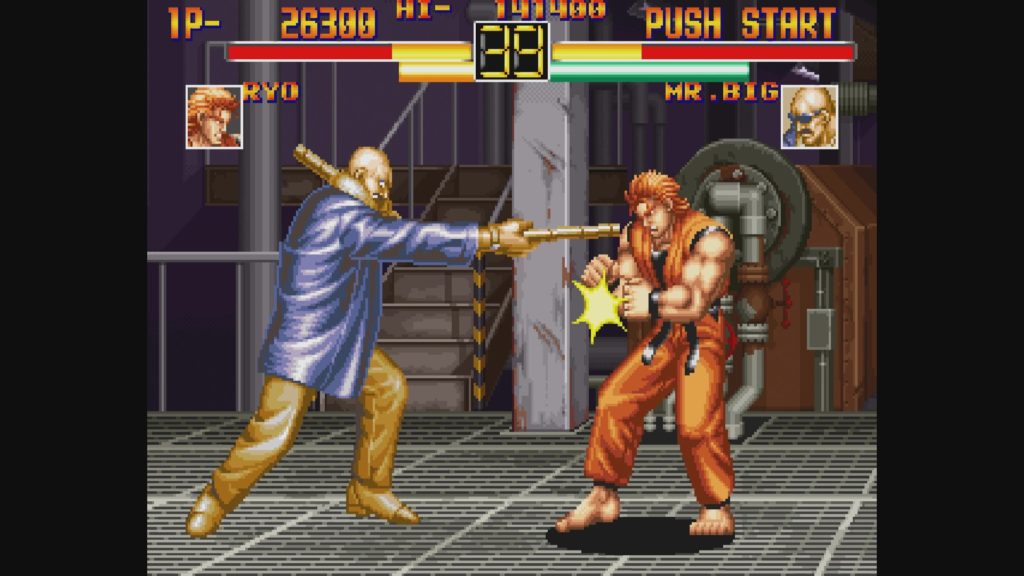
Part of the problem is his astronomical reach, achieved through his weapons. It’s very difficult to stay out of range of these — and consequently very difficult to approach, too. Not only that, but he has a formidable gap-closer as well as the ability to regenerate his Spirit at an alarming rate, meaning that it’s difficult to make effective use of taunts to limit his power.
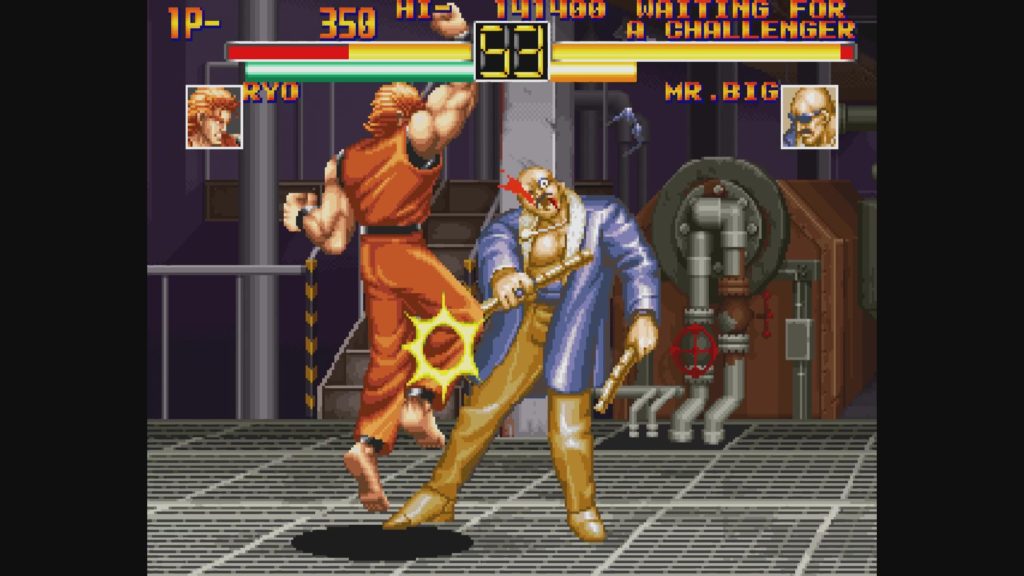
This isn’t to say I didn’t beat him at all, mind; I scored several single-round victories against him, but was unable to actually finish him off for good. I did feel like I was getting a little better with each passing round, but sadly I was out of time to play before I could actually overcome this obstacle and attempt to beat the game. Another time, perhaps.
One thing I noticed during my battles against Mr. Big in particular is that fighting games are as much about psychology as they are displaying the skills you need to beat your opponents. I found that completely consistently, if I lost the first round in a bout, I would inevitably lose the whole thing — because that first loss would put me in a negative mental state towards the rest of the fight. Conversely, if I won the first bout and then took a beating, I would approach the final round with renewed enthusiasm and be able to win maybe 50-60% of the time.
I suspect a significant part of “getting good” at fighting games involves being able to overcome those mental roadblocks and not unconsciously give up if you get your ass handed to you in the first round. But that’s something we can perhaps work on as I explore the other games in this collection.
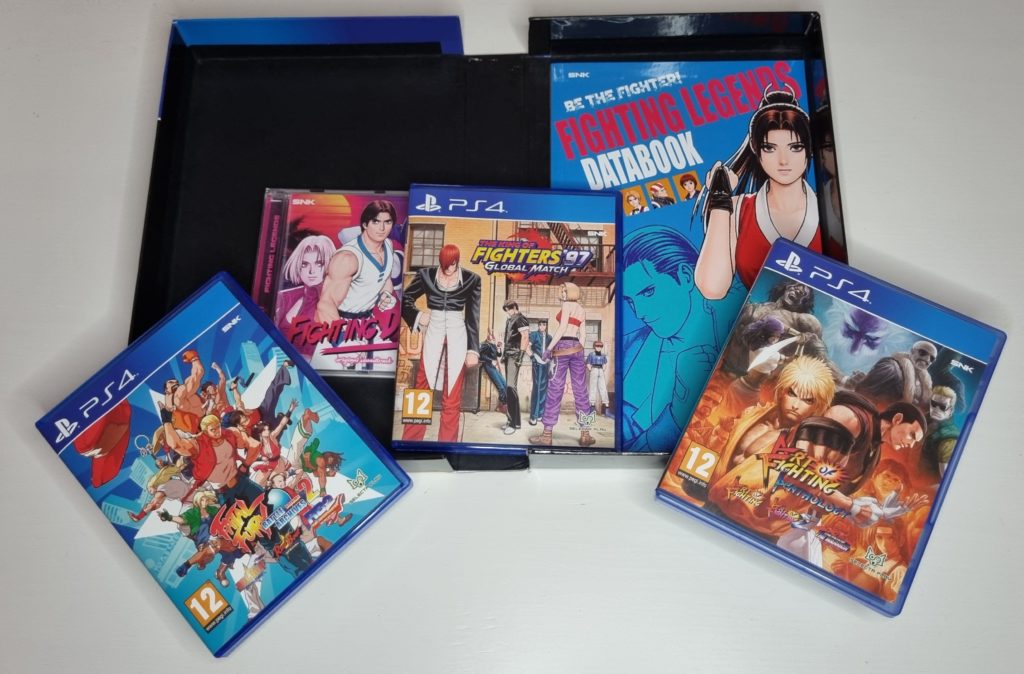
On the whole, I had a good time. Compared to modern fighting games, Art of Fighting is extremely limited in terms of options — no training mode, no survival mode, no means of playing any characters other than Ryo and Robert in single-player, not even an in-game move list to refer to — but I actually rather appreciated the game’s straightforward nature. It meant I could focus on getting some practical experience with playing rather than being bogged down in attempting to learn advanced techniques that I absolutely was not ready to incorporate into my regular play.
My first impressions of the SNK Fighting Legends bundle, then, is that it’s going to be a great way to gain some experience with some thoroughly lovely fighting games. Presentation and performance of Art of Fighting is flawless despite it being a PS4 port of a PS2 port of a Neo Geo game, and the fightpad really helped; they may be pricy, but if you’re at all interested in learning how to play this kind of game, I’d say they’re well worth the investment.
If you’d like to get your hands on this sexy bundle of retro fighting classics for yourself, head on over to our pals at Funstock and place a preorder for yourself; they’re planned to ship out in the fourth quarter of this year. Click here to take a look!
Join The Discussion
Rice Digital Discord
Rice Digital Twitter
Rice Digital Facebook
Or write us a letter for the Rice Digital Friday Letters Page by clicking here!
Disclosure: Some links in this article may be affiliate links, which means we may earn a small commission if you make a purchase after clicking on them. This is at no additional cost to you and helps support Rice Digital!
- Letter from the Editor: passing the torch - June 30, 2023
- Super Woden GP 2 is looking promising - June 30, 2023
- Inti Creates is making a 32 bit-style Love Live action platformer - June 26, 2023






